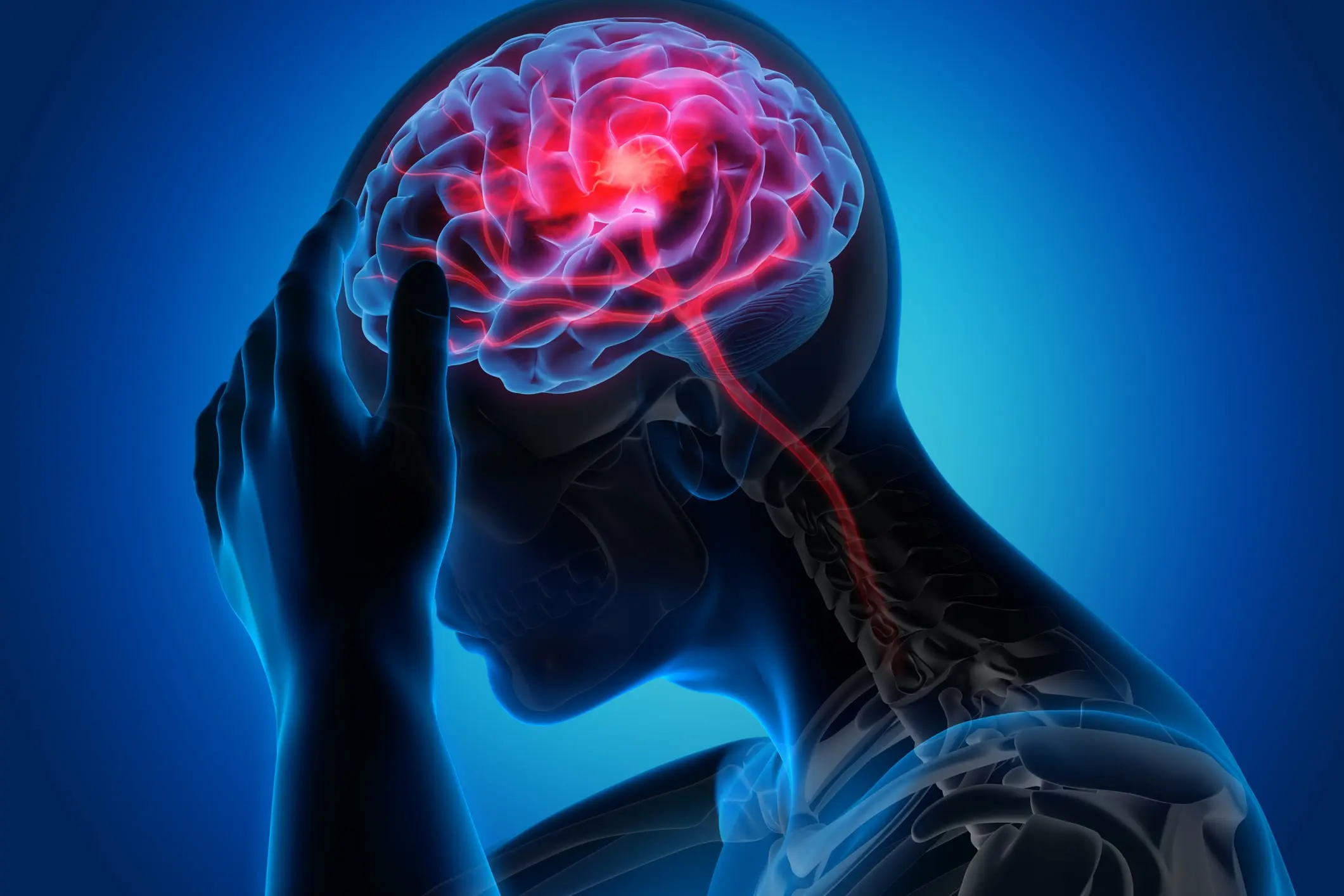The misuse of Xylazine, also known as ‘Tranq,’ has become a growing concern for public health.
Originally intended for veterinary medicine, humans are now using this drug for its sedative, anesthetic, and muscle-relaxing properties–often with dangerous consequences.
As its misuse continues to rise, it’s crucial to recognize the signs and symptoms of Xylazine exposure or overdose for personal safety and public awareness.
This article provides insight on identifying if you or someone you know has been exposed to this substance and what immediate actions should be taken.
Understanding The Dangers of ‘Tranq’ (Xylazine)
Xylazine, commonly known as “Tranq” on the streets, is a drug initially designed for veterinary use as a sedative and analgesic.
It’s not approved for human consumption and can lead to severe health risks when misused.
Despite its dangers, it’s increasingly added to illicit drugs, often combined with potent synthetic opioids like fentanyl, raising significant public health concerns.
Detection of Xylazine in Various Illicit Drugs
You may be surprised to know that Xylazine is found in several illegal substances, including cocaine, amphetamine-type stimulants, opioids, and new psychoactive substances (NPS).
This can pose serious health risks.
It’s a common misconception that it’s only present in opioids, but it’s actually being mixed into various other drugs as a cutting agent.
This can increase dangerous health risks for individuals unknowingly consuming these laced drugs.
The sad reality is that many people won’t know they’ve gotten Tranq until after using it.
Remember, even with Tranq test strips, there is no ‘safe’ way to use drugs because each drug poses it’s risks.
How Do I Know If I Have ‘Tranq’ (Xylazine)?
It is important to distinguish Xylazine from other substances for proper diagnosis and treatment, especially since it is becoming more common in illicit drugs.
Luckily, various testing options are available to identify Xylazine.
Blood tests can offer a snapshot of recent use, detecting substances consumed within a narrow window of time, often just a few hours or days.
Urine tests extend that window, generally identifying substances ingested within the past week.
Toxicology reports are used in emergency medical or forensic settings to detect Xylazine and other substances.
These reports provide a comprehensive view of what an individual may have consumed, which is helpful for medical professionals in suspected abuse or overdose cases.
For those concerned about the potential presence of Xylazine in their drugs, specialized test kits are available for personal use.
These can serve as a preliminary method for detecting dangerous adulterants, although they should not be considered completely foolproof.
Consult your nearby harm reduction organization to see if they offer these test strips.
Xylazine symptoms you should look out for:
Physical Symptoms
The use of ‘Tranq’ Xylazine can result in immediate and worrisome physical symptoms.
One of the most noticeable effects is a slowed heart rate, which can lead to low blood pressure and put cardiovascular health at risk.
Drowsiness is also a common symptom, causing reduced alertness and responsiveness.
This can be particularly dangerous if the person affected is operating machinery or driving.
Loss of coordination and difficulty walking are other frequent symptoms, indicating the drug’s impact on the nervous system and motor control.
People who inject xylazine or combine it with other substances are at an elevated risk for soft tissue damage, which can result in necrotic tissue and, in severe cases, may necessitate amputation.
These symptoms pose an immediate health risk and raise concerns about potential accidents or hazardous situations, emphasizing the dangers associated with Xylazine use.
| Type of Symptoms | Specific Symptoms | Detailed Descriptions |
|---|---|---|
| Immediate symptoms | Drowsiness or lethargy | Experiencing an overwhelming feeling of tiredness or sluggishness, often making it difficult to stay awake or focused. |
| Lowered heart rate and blood pressure | A noticeable reduction in heart rate and/or blood pressure which could be dangerous if it falls too low. | |
| Respiratory depression | Slowed or shallow breathing can lead to decreased oxygen levels in the body, posing a serious health risk. | |
| Subtle symptoms | Dry mouth | A sticky feeling often accompanies an uncomfortable sensation of dryness in the oral cavity. |
| Dizziness | A feeling of unsteadiness, lightheadedness, or a sense that one’s surroundings are spinning. | |
| Lack of coordination | Difficulty in executing precise movements, often resulting in clumsiness or unsteady gait. | |
| Severe symptoms and complications | Hypoxia | A condition where the body or specific areas are deprived of adequate oxygen supply can lead to organ dysfunction. |
| Coma | A state of deep unconsciousness that lasts for an extended period, requiring immediate medical intervention. | |
| Death in extreme cases | In the most severe cases, exposure to Xylazine can lead to death, especially when mixed with other substances like opioids. |
Behavioral Changes
Behavioral changes are a notable aspect of ‘Tranq’ Xylazine use, which can manifest in various ways.
For instance, individuals exposed to the substance may experience heightened levels of anxiety or depression, exhibiting symptoms like restlessness, excessive worrying, or prolonged sadness.
Additionally, agitation and irritability can become pronounced, leading to frequent mood swings or aggressive behaviors that are atypical for the person.1
Conversely, some may exhibit unusual calmness or sedation, displaying an uncharacteristic lack of responsiveness or emotional flatness.
These behavioral shifts signal the drug’s complex impact on the central nervous system and underscore the risks associated with its misuse.
| Behavioral Changes | Description |
|---|---|
| Increased anxiety or depression | Individuals may experience heightened anxiety, characterized by symptoms like excessive worrying, restlessness, or a constant feeling of impending doom. Similarly, signs of depression, such as prolonged sadness, hopelessness, and loss of interest in activities, may become more pronounced. |
| Agitation and irritability | Exposure to Xylazine can lead to increased irritability and agitation. Affected individuals may display frequent mood swings, a short temper, and even aggressive behaviors that are out of character for them. |
| Unusual calmness or sedation | Some may react to Xylazine with an uncharacteristic sense of calmness or sedation. This can manifest as emotional flatness, lack of responsiveness, or extreme lethargy, making the individual appear disengaged or unresponsive to their environment. |
Cognitive Effects
The cognitive effects of ‘Tranq’ Xylazine use are a significant concern and can manifest in multiple ways that disrupt normal mental functioning.
Individuals exposed to this substance may experience confusion and disorientation, finding it challenging to understand their environment or even recognize familiar people and places.
Memory problems often accompany this, making it difficult to retain new information or concentrate on tasks at hand.
Perhaps most alarmingly, Xylazine can severely impair judgment and decision-making abilities.
Under its influence, individuals are more likely to make risky or harmful choices that they might not otherwise consider, elevating the risk of accidents or other dangerous situations.
These cognitive impairments pose immediate risks and can have long-term consequences, particularly if exposure to the substance is sustained or recurrent.
| Cognitive Effects | Detailed Descriptions |
|---|---|
| Confusion and disorientation | Exposure to Xylazine may lead to cognitive disruptions such as confusion and disorientation, making it difficult for individuals to understand their surroundings or recognize familiar faces and places. |
| Memory problems and difficulty concentrating | Individuals under the influence of Xylazine often experience memory issues, which may manifest as forgetfulness or the inability to retain new information. This is often coupled with difficulty concentrating on tasks, impairing productivity and functionality. |
| Impaired judgment and decision-making | Xylazine can severely impact an individual’s ability to make sound judgments and decisions. This impairment increases the likelihood of engaging in risky or harmful activities, thereby escalating the risks of accidents or other hazardous situations. |
Long-term Risks
The long-term risks of ‘Tranq’ Xylazine use are substantial and multi-faceted.
One of the most immediate concerns is the potential for addiction and dependence, as the drug’s sedative effects can lead to repeated use and, eventually, physical or psychological reliance.
Over time, exposure to Xylazine can also result in significant damage to vital organs, including the heart and lungs, due to its impact on respiratory and cardiovascular systems.
Injecting xylazine or mixing it with other substances increases the risk of soft tissue damage, leading to necrotic tissue and, in severe cases, amputation.2
Perhaps equally troubling are the long-term mental health implications.
Chronic use of Xylazine has been associated with persistent cognitive impairments and mental health issues such as increased anxiety, depression, and other mood disorders.
These long-term risks not only jeopardize the individual’s immediate well-being but also potentially cause irreversible harm, making it imperative to address and curb the illicit use of this substance.
| Long-term Risks | Detailed Descriptions |
|---|---|
| Addiction and Dependence | The sedative effects of Xylazine can lead to repeated use, creating a cycle of physical or psychological dependence. Over time, addiction to the substance can form, requiring escalating doses for the same effects and making withdrawal increasingly difficult. |
| Damage to Vital Organs | Chronic exposure to Xylazine can cause significant harm to essential organs like the heart and lungs. Its impact on the cardiovascular and respiratory systems can lead to long-term complications, including heart failure or respiratory disorders. |
| Mental Health Issues | Long-term use of Xylazine has been linked with persistent mental health problems, including heightened anxiety, depression, and other mood disorders. These issues can severely impact the quality of life and may require long-term psychiatric care. |
Overdose and Death Risks
One of the most perilous aspects of illicit ‘Tranq’ Xylazine use is the lack of quality control and the varying potency in unregulated sources.
Unlike pharmaceutical-grade substances, which undergo rigorous testing and standardization, the Xylazine found on the street is often cut with other substances.
Its concentration can vary dramatically from one batch to another.
Additionally, the drug may be mixed with other potent substances like fentanyl, creating a hazardous cocktail with potentially lethal interactions.
This unpredictability significantly elevates the risk of overdose, as users have no reliable way to gauge the strength of the drug they are ingesting.
The symptoms of a ‘Tranq’ Xylazine overdose are acute and potentially life-threatening, requiring immediate medical intervention.
The most alarming signs include extreme drowsiness to the point of unresponsiveness, a severely slowed heart rate, and alarmingly low blood pressure, all of which can lead to critical organ failure.
Respiratory depression is also a significant concern, as it can result in hypoxia, a lack of oxygen supply to the body, and, ultimately, death.
In extreme instances, the individual may experience seizures or lose consciousness entirely.
Given the gravity of these symptoms, immediate action is crucial.
Call emergency services immediately if you suspect someone is experiencing a Xylazine overdose.
While waiting for medical assistance, try to keep the person awake and upright to assist with breathing, but do not administer any substances unless advised by medical professionals.
Immediate and appropriate medical treatment is essential to mitigate the risks of long-term damage or death.
What is the Reversal Drug for ‘Tranq’ (Xylazine)?
There isn’t a sanctioned antidote for xylazine overdose in humans, with primary treatment being supportive care.
There is a common misunderstanding that Narcan can reverse the effects of a Tranq (Xylazine) overdose.
However, this is not true.
Narcan is specifically meant for opioid overdoses, and since Xylazine is not an opioid, it cannot counteract its effects.
If someone has a weak response to naloxone, it may suggest they have also consumed Xylazine or other non-opioid substances.
According to a study, Tolazine can act as an antidote for xylazine and reverse its effects.3
This is an important finding for safely performing surgical procedures.
However, it should be noted that the study was conducted on calves, and it is not clear whether it would have the same effect on humans.
When dealing with a potential overdose, here are some key signs:
| Signs of a Tranq Overdose | Detailed Descriptions |
|---|---|
| Extreme Drowsiness | An overdose can lead to an intensified level of drowsiness, rendering the individual almost unresponsive and making it difficult to rouse them. |
| Severely Slowed Heart Rate | An abnormally slow heart rate is a critical sign of overdose, requiring immediate medical intervention to avoid cardiac arrest. |
| Profoundly Low Blood Pressure | An overdose can result in dangerously low blood pressure, risking insufficient blood flow to vital organs and potentially causing organ failure. |
| Respiratory Depression | Reduced breathing rate or difficulty in breathing can occur, depriving the body of essential oxygen and leading to hypoxia or even death if not promptly treated. |
| Loss of Consciousness | A person overdosing on Xylazine may fall into a stupor or lose consciousness entirely, requiring immediate medical attention to prevent further complications. |
| Seizures | In extreme cases, an overdose can result in sudden seizures and uncontrolled electrical disturbances in the brain, further escalating the need for emergency care. |
Seeking Treatment and Professional Help
Seeking treatment and professional help is crucial for anyone struggling with ‘Tranq’ Xylazine abuse or addiction.
Due to the drug’s potential for causing both physical and psychological dependence, a comprehensive treatment approach is often necessary.
This could involve medical detoxification to safely manage withdrawal symptoms, followed by inpatient or outpatient rehabilitation programs that offer behavioral therapies, medication management, and support for co-occurring mental health conditions.
Cognitive Behavioral Therapy (CBT), group therapy, and individual counseling are common in rehab settings to address the underlying issues contributing to substance abuse.
Professional help in the form of medical detox and rehabilitation programs can guide you toward a path of recovery.
Specialized facilities also often offer family therapy and aftercare programs, which provide continued support to sustain long-term recovery.
The first essential step toward recovery is to consult with a healthcare provider for a proper diagnosis and treatment plan tailored to individual needs.
For those grappling with dependence or abuse, there is hope.
If you or someone you know struggles with Xylazine abuse, it’s never too late to seek help.
At Cornerstone Healing Center in Scottsdale, AZ, we provide personalized addiction treatment services tailored to your specific needs.
Our holistic healing approach focuses on addressing the root causes of addiction to achieve sustainable recovery.
Stay safe, seek assistance, and remember that a brighter, healthier future is possible!
SOURCES
[1] Aggressive Behavior Associated with the Use of Xylazine and Detomidine
[2] Xylazine-Induced Skin Ulcers in a Person Who Injects Drugs in Philadelphia, Pennsylvania, USA
[3] Effectiveness of tolazoline in reversing xylazine-induced sedation in calves
Published: 9/2/2023
Contributor: Julie Miller
Editor: Susana Spiegel








